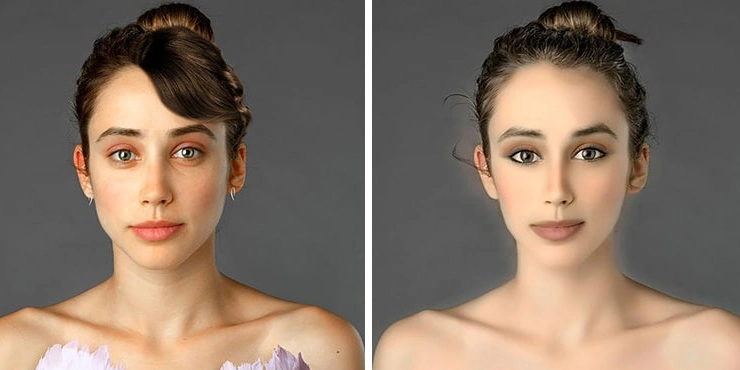Beauty Standards – As recently as a decade ago, people had to look a certain way to be considered beautiful by media and societal standards. The go-to was slim (or skinny), young, and white, with symmetrical features and “gender-appropriate” facial and body hair. There were exceptions, typically to include some racially diverse (but light-skinned) men and women. But for the most part, you had to be what was considered “flawless” — and never, ever overweight.
The times, though, are changing, by the looks of People Magazine’s 2023 Beautiful Issue. Just look at the top five spots: Melissa McCarthy, Ali Wong, Rihanna, Jamie Lee Curtis, and Sheryl Lee Ralph. In 2023, people are finally waking up to just how much our differences make us beautiful. Here are some of the ways visible variations can open up conversations about beauty standards and amplify the call for inclusivity.
Table of Contents
1. Scars and Skin Conditions
Over the past several years, models and celebrities with visible conditions like melasma, vitiligo, and scarring have gained more visibility. These individuals have also become more vocal about their conditions in ways that force honest conversations about modern beauty standards. Winnie Harlow, for example, has spoken publicly about the bullying she faced as a child with vitiligo. She’s now a supermodel who has worked for Fendi, Marc Jacobs, Victoria’s Secret, and more.
Celebrity stances on exactly how to approach skin conditions do vary a bit from person to person. Some models and actors make a show of posting makeup-free photos on social media to spread awareness. Others choose to minimize the appearance of spots or dark patches with products like hydroquinone. This range of approaches makes it clear that beauty standards and practices are more diverse than ever. It’s truly each person’s choice to do what they wish with their appearance and still be considered beautiful.
2. Beautiful at Every Size – Beauty Standards
The “ideal body type” has changed a bit from generation to generation or decade to decade. But in America, at least, it’s always been some mild variation on the theme of “slim.” In the Marilyn Monroe era, you could be slightly less thin and flaunt full breasts and hips. More recently, you had to be thin and muscular or thin with an enormous butt. The diet and beauty industries have made a massive fortune off of keeping people (mostly women) discontent with their bodies.
But all this is starting to change, as fat, plus-size, and curvy folks make their way into the spotlight. Plus-size models have become much more mainstream than before, and have earned massive social media followings. Many clothing brands have had to adapt as new beauty standards force retailers to accommodate more body sizes. As a result of all this change, powerful conversations are taking place around body acceptance and inclusivity.
3. Gender as a Spectrum
Queer, trans, and non-binary models, actors, and other celebrities are changing the face of what it means to be beautiful. Beauty in the U.S. once meant strict adherence to cis male or female beauty standards. But now, some of the most successful and admired influencers, public figures, and artists are proudly sharing their truest selves. In turn, their followers are finding freedom to dress and wear makeup in ways that fully represent their identities.
Brands and retailers are following suit, with apparel companies creating gender neutral and gender diversity-friendly clothing to accommodate differences. Inclusive bra and underwear brands like Tomboy X’s are helping queer, trans, and non-binary folks comfortably achieve a masculine look. Makeup brands like CoverGirl and L’Oreal have normalized highlighting male models to rep products like lipstick and mascara.
4. Racial, Ethnic, and Cultural Diversity
American advertising and media have long made a show of tokenized diversity in TV and movies and when selling products. For years, they’ve been hiring one or two people of color and call it a diversity day. In recent years, though, there has been greater demand for broader representation. More TV shows and movies feature mostly non-white casts or lead actors. Beauty standards are adjusting to center darker skin and features that don’t fit a white-centered aesthetic.
Natural Black and kinky or textured hair, long stigmatized in the U.S., is now commonly seen on fashion show runways. (Though, unfortunately, the industry has a long way to go when it comes to providing competent stylists to work with natural hair.) Models in traditional headscarves, or hijabs, have also made their way into the modeling industry. There are many other examples of how diverse beauty standards are entering the mainstream. But all are enabling open conversations, and proving there isn’t just one way to be beautiful.
Endless Variety and Boundless Beauty – Beauty Standards
The above are just four examples of how visible differences are changing beauty standards across the U.S. and around the world. Other differences like age and a range of disabilities are also breaking down and rebuilding beauty standards. The more representation people see of themselves, the easier it is for them to feel beautiful. And the more people feel accepted and included, the more easily they can hold powerful conversations about further change.
But there’s still a long way to go, and there are still many influential forces keeping old beauty standards strong. The fashion industry overall, for example, is still extremely gendered and could take decades to change. Body inclusivity, too, won’t be complete as long as brands and retailers segregate or refuse to accommodate larger bodies. It’s going to be a long fight, but the good news is that beauty is in the eye of the shareholder. As younger generations begin to shape the economy, the media and society will adopt more of their inclusive values.

